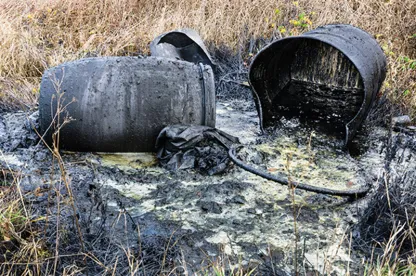A growing number of competing standards has developed over the past few years among the circuit courts for determining when a pollutant’s eventual dispersal in navigable waters through groundwater migration required a Clean Water Act (CWA) permit, following citizen suits targeting groundwater seepage from industries ranging from municipal wastewater treatment to coal.[1] Recognizing the need for guidance on the subject, the US Supreme Court (SCOTUS) granted certiorari in Maui v. Hawaii Wildlife Fund, et al., 2020 WL 1941966 (April 23, 2020).[2] However, as Justice Alito emphasizes in his 18-page dissent, the majority opinion may lead to more confusion as industrial and municipal facilities, state and federal agencies, and the lower courts attempt to apply the prescribed “functional equivalent of a discharge” standard to new and existing instances where pollutants travel through groundwater to end up in “navigable waters.” This article will briefly outline the holding of the six-member majority opinion and highlight some considerations for individual facility owners moving forward.
The Maui case concerns a wastewater reclamation facility that was built in the 1970s and discharges wastewater into injection wells. The injected wastewater then enters an aquifer and eventually makes its way, through the groundwater, to the Pacific Ocean. Prior to construction of the facility, the county of Maui submitted an environmental impact report to the US Environmental Protection Agency (EPA) and the Hawaii Department of Health (HDOH) that predicted effluent injected into groundwater from the wells would eventually reach the Pacific Ocean. For “nearly five decades” following this notice that the operation would result in wastewater making its way into the ocean via groundwater migration, neither the EPA nor the HDOH required a National Pollutant Discharge Elimination System (NPDES) permit for the injection wells.
A 2012 citizen suit by various environmental groups alleged that the operation of these injection wells at the Maui wastewater reclamation facility without an NPDES permit was an ongoing CWA violation. The district court in Hawaii granted plaintiffs’ motion for summary judgment on liability because the pollutants in the ocean could be “directly traced from the injection wells to the ocean.” On appeal, the US Court of Appeals for the Ninth Circuit affirmed the lower court’s decision, but found a CWA violation when pollutants that travel through groundwater are merely “fairly traceable” to point sources. In the briefing to the Supreme Court, Maui and the government’s position was that once a pollutant from a point source travels any distance through groundwater before reaching navigable waters, it is not subject to CWA regulation. Finding that a blanket application of both the Ninth Circuit’s and the government’s standards would create “massive loopholes” in the CWA, the majority rejected both and prescribed a nonexhaustive list of seven factors that lower courts should utilize to determine whether a discharge via groundwater migration amounts to a “functional equivalent of a discharge.”[3]
The Court indicates that determining “whether pollutants that arrive at navigable waters after traveling through groundwater” is the “functional equivalent of a discharge” depends on “how similar to (or different from) the particular discharge is to a direct discharge.”[4] It goes on to recognize that this standard is not straightforward and will involve lower courts making calls to decide individual cases based on individual facts. While acknowledging that “time and distance [are] the most important factors,” it adds five more factors that “may prove relevant,” but that are “just some” of the factors that lower courts may consider.[5] The Court declines to issue a bright-line ruling and leaves confusion regarding (1) whether groundwater is somehow regulated by the CWA, (2) at what point groundwater pollution ceases to be from a “point source” (and subject to CWA) and becomes a “non-point source” (regulated by the states), and (3) the definitive factors and relative weighting of those factors that should be given consideration. Instead, the Court has determined that the lower courts and the agencies will have to figure out what a “functional equivalent of a discharge” looks like on a case-by-case basis.
So what does this mean for the future of citizen suits and industrial operators across the country? For starters, it means that there is no clear vision of what is and is not a CWA violation when it comes to groundwater migration to navigable waters. And that means environmental groups and industry will be litigating the issue with perhaps more frequency than would have occurred had the Court issued a bright-line rule. Another important takeaway from the Maui ruling is that operations that involve groundwater injection may be subject to the CWA permitting scheme, even if the EPA has been on notice of the potential migration of pollutants into navigable waters for decades. This may represent an expansion for citizen suits by environmental groups that target any industrial operation utilizing shallow injection wells in the vicinity of navigable waters. It is also a warning to existing operators to review their operations and identify whether they may end up on that list of targets.
Justice Alito noted in his dissent that there are more than 6,000 injection wells in Hawaii — and not one operates with an NPDES permit. That statistic (and similar statistics throughout the country) is likely to change in light of the Maui ruling — through voluntary actions of operators, increased citizen suits,[6] or eventual action by the EPA.[7]
[1] See Upstate Forever v. Kinder Morgan Energy Partners, L.P., 887 F. 3d 637 (4th Cir. April 12, 2018) (finding that hydrocarbons from a ruptured underground pipeline that ended up in navigable waters via a “direct hydrological connection” through groundwater was a CWA violation); Ky. Waterways All. v. Ky. Utils. Co., 905 F. 3d 925 (6th Cir. Sept. 24, 2018) (holding that coal ash waste that permeated through groundwater was not a “point source” subject to CWA permitting).
[2] 2020 WL 1941966 (2020).
[3] One issue on which eight of the justices agreed was that EPA’s recent “Interpretive Statement” (which concluded that it reads the CWA as excluding “all releases of pollutants to groundwater” from the scope of the permitting program) was to be afforded no deference, under either the Chevron or Skidmore doctrines.
[4] Page 16.
[5] The seven nonexhaustive and hardly committed-to factors set forth by the majority include “(1) transit time, (2) distance traveled, (3) the nature of the material through which the pollutant travels, (4) the extent to which the pollutant is diluted or chemically changed as it travels, (5) the amount of pollutant entering the navigable waters relative to the amount of pollutant that leaves the point source, (6) the manner by or area in which the pollutant enters the navigable waters, [and] (7) the degree to which the pollution (at that point) has maintained its specific identity.”
[6] The Court did caution that courts should use discretion on any penalties for unpermitted groundwater pollutant discharges due to the complexities of the matter.
[7] Landfills and septic systems are also problematic under the Court’s ruling, perhaps calling for EPA to issue general permits.





 />i
/>i

